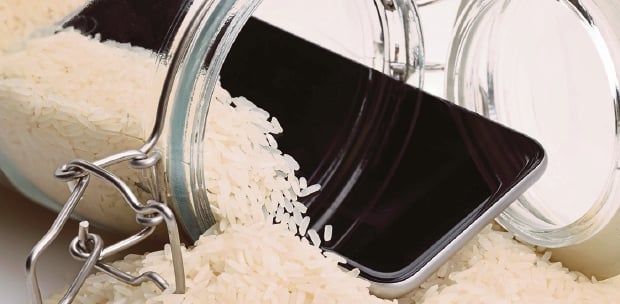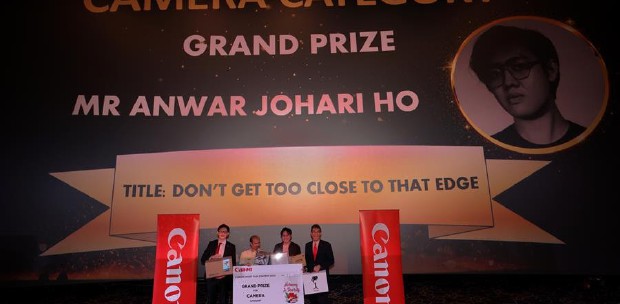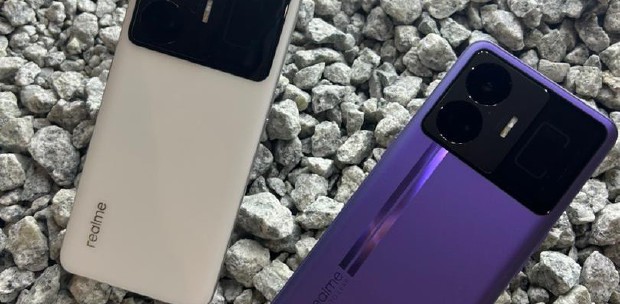LET me make a qualifying statement first: an 8K resolution TV is considered excessive. You don't need an 8K TV, but you sure want one. Prices continue to plummet with each passing year, so should you finally splurge for an 8K TV? Let us take a look at the 82-inch Samsung Q800T and find out.
Design
Believe it or not, the Samsung Q800T does have a noticeable bezel that arrives in the form of a thicker dark metal frame and plastic combination. It can be mounted onto a VESA-compatible mount, so that translates to having a little bit of a gap. Alternatively, you can always place it on a TV bench that is sturdy enough to hold all 54kg of it. I did wish that at this price point, it would have at least come with Samsung's popular One Connect (external junction box) so that I no longer need to plug HDMI cables into the back for an easier installation process. For those who connect equipment frequently to it, a TV bench works better than a mount. If you really need/want to mount it to your wall, then pick a wall bracket with a swing arm.
I love the polished feel of the remote control, it is unlike anything else that you have seen before, which is befitting for the money you paid in exchange for such an ostentatious appliance in your home. The matte chrome body is solid, and the buttons are responsive. It even slides open like a Nokia 8850 to reveal the battery compartment behind for that added touch of class. There are also shortcut buttons on the remote control, including Netflix and Amazon Video.
If there is one drawback to the remote, it would be the lack of a motion-based remote as well as the lack of a numeric keypad, where the latter makes life slightly more inconvenient in keying in my Netflix passcode, going from one digit to another as opposed to simply keying them directly.
Image quality
The Samsung Q800T has that understated look at first glance (apart from its obvious size), but underneath the hood, you will find that it is packed full of technology. The razor-sharp 8K LCD panel is accompanied by direct LED taillights with local dimming in addition to an Ultra Black filter. The Ultra Black filter ensures that the screen glass sports a very matte look so that reflection from light is minimised. I did point my smartphone's flash at it, and there was a stark difference between that compared to my regular 55" Samsung TU8000.
Samsung's latest Quantum Processor 8K is used to control all 33 million pixels, where it relies on machine learning and artificial intelligence to optimise image quality. I was definitely mesmerised by the Retail Mode demos, and images shown were extremely sharp. The demo sequences that depicted scenes of nature, cute puppies and furry animals, and full-blown, colourful fairs that were full of people (pre-Covid) blew my eyes away. In fact, it felt too lifelike where you need to see it to believe it. Unfortunately, it will be quite a while before regular 8K programming is available, let alone 4K programming.
This Samsung panel delivers excellent contrast and black level, where scenes that depict fireworks or even action in dark environments were delivered flawlessly. However, it was hit-and-miss with certain movies, and I would attribute that to the source material. Moulin Rouge had plenty of noise in low-light scenes, and let us not even go into the visual "High Definition" farce that is Astro, where watching shows on Astro felt like a throwback to the days where one could purchase a bootleg copy of the latest blockbuster from your shady pasar malam DVD dealer.
In scenes where there was movement of an object (like a vehicle or a person walking) with complicated visuals were in the background, such as highly detailed fences or well-manicured garden, visual artifacts surrounded said person or vehicle that proved to be more noticeable than on my 55" screen simply because the 82" size delivered far more of a visual feast to make it noticeable. I believe that the 8K AI upscaling also played a minor role in this.
I purposely left the blinds open during the day in order to ensure that the Q800T worked well during the day - and it did not disappoint. Colour reproduction was certainly on point, offering intense and colourful results.
Sound system
I would highly recommend that the Samsung Q800T be hooked up to an external sound system. As much as the marketing material might want to wow you with the presence of the two top speakers, front, side, and up-firing speakers, the laws of physics simply come into play when you increase the volume to enjoy your favourite action-packed movie.
There isn't enough room within the TV's chassis to ensure that clean audio is pumped out during those explosive scenes. Turn on the volume and you will hear cracks and hisses - which makes a soundbar or external audio system a compulsory addition to compensate for the lack of punch with the advertised 4.2.2 setup.
The Object Tracking Sound+ (OTS+) feature works well enough for me, with the dedicated up-firing and side-firing speakers delivering immersive sound as and when required, tracking the motion in most scenes well enough.
The Active Voice Amplifier (AVA) feature disappointed though. AVA is supposed to amplify the voices in a particular scene so that dialogue is delivered clearly, ensuring that I am still able to follow every single word of the conversation. I decided to test it out with my 1200W vacuum cleaner purring in the background with a conversation heavy episode of Suits playing. Unfortunately, I could not make out a word of what Harvey and Mike said, so I decided to get my vacuuming done farther away in the dining room to no avail, there was no discernible difference in audio to make me experience an "Eureka!" moment.
Overall, it worked great for regular movies and series at lower volume levels, just don't crank up the volume too high and then you will experience cracks in the sound. I must say that at this price point, you would most probably have a decent external speaker setup in your living room in the first place to complement this visual behemoth.
User-friendliness and features
It is a no-brainer that this is a smart TV from the get-go. The Tizen user interface has been updated, sporting sharper visuals and a more organised range of menus. It is easy enough to locate the different types of content, with enough customisation options to let you sort the services in accordance to your preferences.
Services offered by default are extensive, offering the likes of Netflix, Amazon Prime, HBO, Rakuten, and Apple TV, among others. Those who are rocking to an iPhone will find it easy to stream content directly to the TV screen via Airplay 2 support. The YouTube app itself has also been updated to support the latest AV1 video compression, letting you enjoy YouTube in 8K resolution now (which would be a major drawback if it couldn't do so!)
There is a Smart view sidebar function that allows you to display your smartphone's screen beside the TV content, although this function is limited to Android-powered devices only. Since the TV itself is so large, it is useful enough under certain situations, such as when you are trying to keep tabs on a particular chat thread while watching TV, or you have two different people who under some strange circumstance, want to view two totally different things simultaneously. In such a case, the audio issue is sorted out since you can always tune in to one screen via the headphone output. Multi-window mode or Picture-in-Picture would find very limited use for most people, but it is nice to know that it is available should the need arise.
HDR video including HDR10+ is supported, while full HDMI 2.1 support is also there right out of the box. HDMI 2.1 is important for 8K as it enables the transmission of video signals in 8K/60p format, which could be a future-proofing effort by Samsung. Other kinds of support include 4K/120p (High Frame Rate/HFR), Variable Refresh Rate (VRR) and Auto Low Latency Mode (ALLM). Bear in mind that only one HDMI input supports full bandwidth as the remaining three still stick to the older HDMI 2.0 standard.
Setup was easy, from hunting down the home's Wi-Fi network and logging into my Netflix account. However, I did encounter connectivity issues to my Wi-Fi router at least a couple of times over the course of two weeks, requiring me to reset my router for it to work even though other devices hooked up to the router did not experience any connection issues. I had no such issues with my 55-inch Samsung TU8000 that remained connected to the very same router since May this year. I am not sure if this is because I received a lemon, but it is an observation to take note of.
Conclusion
Do you need an 8K TV? No. Do you want one? Absolutely! The closest analogy that I could think of is purchasing a 5G-ready smartphone at the moment when students still need to climb up a tree in order to obtain a cellular signal on their handset just so that they can submit their assignments in Malaysia. Unless you are happy with 8K videos on YouTube that do nothing but make you feel all the more frustrated at being cooped up at home simply because you cannot travel to those exotic places due to the Covid-19 pandemic.
Although popular video streaming services like Netflix do offer 4K resolution movies, they are few and far in between with the majority of the fare served in Full HD. It is a case of diminishing returns from 4K to 8K resolution, as you won't see the clear and obvious jump in quality as we once did from regular DVDs to Blu-ray. The inclusion of 8K video upscaling still needs some work, which does not come across as surprising as there has never been any really great looking upscaled video that I've observed to date. In fact, in some situations, it might even be detrimental to the overall viewing experience.
On the gaming front, having Real Game Enhancer turned on might see a slight jump in the graphics quality (especially in dark scenes) and Game Mode could boost the overall frame rate, but it is definitely not a killer feature that seals the deal. However, anyone who is about to jump aboard the next-gen console gaming bandwagon with the release of the Sony PS5 and Microsoft Xbox X might want to give this indulgent purchase a shot if they have the money to burn.
Only those with a huge budget surplus should check out this behemoth from Samsung. After all, you can purchase a top-of-the-range Proton Saga at the RM39,999 recommended retail price for the 82-inch model, while the 65-inch sibling is going for RM23,999 - which is the going price for an entry level Perodua Axia.
Let's face it: majority of consumers would not even consider either model due to the retail price. From a monetary perspective, however, the price of this TV has dropped dramatically by more than half since last year when its predecessor first rolled out, making bean counters with a fat bank balance gleefully seize the chance to pick up a "bargain".
As Einstein taught, "It's all relative."
Use Lazada Voucher Code & save huge on home electronics.





